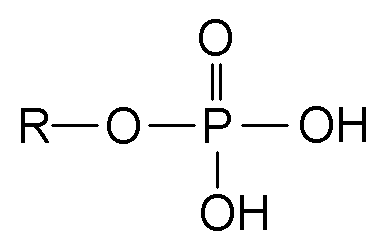-
 Polyprotein
Polyprotein
-
 Coppice
Coppice
-
 Ohm's law
Ohm's law
-
 Rectrice
Rectrice
-
 Detoxification
Detoxification
-
 Prime number
Prime number
-
 Conservation
Conservation
-
 Postpharyngeal gland
Postpharyngeal gland
-
 Angiosperm
Angiosperm
-
 Isomerism
Isomerism
-
 Pulsar
Pulsar
-
 Epitaxy
Epitaxy
-
 Spreading (agricultural practice)
Spreading (agricultural practice)
-
 Spandrel
Spandrel
-
 SKIP
SKIP
-
 Atlas V
Atlas V
-
 Cholestasis
Cholestasis
-
 Core 2 Duo
Core 2 Duo
-
 Fovea
Fovea
-
 "Goussaud" morphology
"Goussaud" morphology
-
 The Bohr atom
The Bohr atom
-
 Biofuel
Biofuel
-
 Transferase
Transferase
-
 Duodenum
Duodenum
-
 Polymerisation
Polymerisation
-
 Cancer
Cancer
-
 Chikungunya
Chikungunya
-
 Glass mat
Glass mat
-
 Magnetic pole
Magnetic pole
-
 Alkaloid
Alkaloid
Phosphorylation
Phosphorylation is the addition of a phosphate group to a molecule.
Phosphorylation mechanism
Phosphorylation is a chemical modification consisting in adding a phosphate group (PO43-) to a molecule taken from a molecule of ATP (which then becomes ADP).
In biology phosphorylation is catalysed by kinase enzymes, while the reverse reaction, dephosphorylation (the removal of the phosphate group) is catalysed by other enzymes, phosphatases.
The function of phosphorylation
Phosphorylation is a common biological modification performed on proteins or small molecules.
The protein phosphorylation is a post-translational modification, carried out on certain amino acids (usually serine, threonine and tyrosine) regulating their biological action.
 The addition of a phosphate group to a molecule is called phosphorylation. © DR
The addition of a phosphate group to a molecule is called phosphorylation. © DR
Latest
Fill out my online form.



